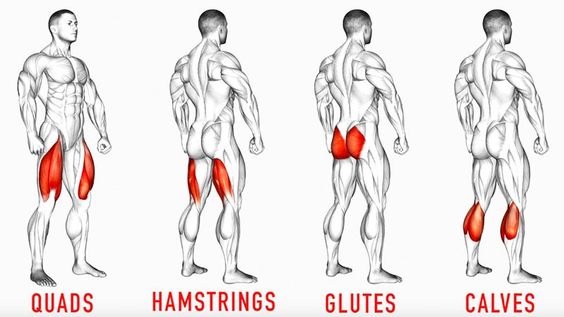 If you have knee pain, don't know what to do about it, are sick of living in pain and discomfort and can't do some of the activities you would like to do, this blog is for you. Knee pain is a very common cause of complaint here at the clinic, whether you have pain related to wear and tear from normal changes seen from aging or you have had an accident and caused an injury, knee pain can be a painful and annoying problem to have. Unfortunately knee pain comes in many different ways, different movements make the pain worse for different people, there are different ways to help knee pain depending on the person and there are different outcomes for many different people therefore, exercises to reduce your pain and let you do what you want to do can vary. Below I will talk you through some muscles important in anyone's knee pain and how to build a strong robust knee. Muscles important in knee pain and function. The knee is made up of 3 bones:
The 2 long bones, femur and the tibia are covered in a layer of cartilage, this cartilage absorbs the impact from daily activities and protects the knee. Essentially, the knee is held together by tissues called ligaments, tendons and muscles which protect and support the knee. There are 2 main muscle groups that are important in knee function and other muscles that also help significantly with knee function. The 2 main muscle groups include: Quadriceps - these muscles are located above the knee on the front of your leg and their primary role is to straighten your knee. Hamstrings - these muscles are located above the knee on the back of your leg and their primary role is to bend the knee. The other muscles that help with knee function are:
Although these muscles don't all impact the knee joint directly they all work together to move the knee joint and provide stability to the joint. We like to refer to the muscles of the lower limbs as scaffolding for the knee. By building a strong scaffold for the knee, we can improve the strength of the knee and provide stability and protection. By building a stronger scaffold we can improve the health of the knee, improve the function of the knee and get you back to doing the activities you want with less knee pain. How do we build the Scaffold for the knee? Again, there are no exercises that are suitable for everyone that comes in with knee pain as everyone's pain is different. However below are some common exercises that are given here in the clinic that help with knee pain, help strengthen the scaffolding around your knee and build a resilient and robust joint. Easy beginning exercises: Knee Extension Step 1: Sit in a chair high enough so the back of your knees are touching the chair Step 2: Keep the back of your knee on the chair, straighten your leg, tightening the front of your thigh. Step 3: Lower your leg slowing back to the beginning. Step 4: Repeat on both legs Calf Raises Step 1: Stand next to something for balance Step 2: Raising onto your toes as high as you can. Step 3: Lower your heels back to the ground Hamstring Curls Step 1: Sit in a chair high enough so the back of your knees are touching the chair. Step 2: Tie a resistance band around a pole in a loop and put one leg in. Step 3: Keep the back of your knee on the chair, bringing your heel towards the chair, tightening the back of your thigh. Step 3: Slowly bringing your back to the beginning. Step 4: Repeat on both legs More advanced exercises: Step Ups Step 1: Standing behind a step Step 2: Step up, one leg at a time, bringing both legs on top of the step Step 3: Slowly step back down with the leg you stepped up with first. Step 4: Repeat on the other leg Chair Squats Step 1: Stand with a chair behind you.
Step 2: Slowly lower your body as if you were squatting or sitting on the chair. Step 3: Rise from the chair prior to you sitting down. To begin these exercises, start by performing 3 sets x 8 repetitions. Gradually increase until you feel like you are working harder enough with only a small amount of knee pain. When you reach 3x15 it is time to increase the load by adding weight or resistance. Some people's goal around knee pain is to get out of pain, some people’s goal is to do activities such as walking or climbing stairs better again and for some people, their goal is to return to sport. Whatever you want to achieve, building those muscles surrounding the knee, is going to be an important factor in your road to better knee health. If anything that has been outlined above doesn't make sense to you or you feel you need a bit more extra attention, come in to see one of our exercise physiologists. Happy exercising!! Izaac Boylan Accredited Exercise Physiologist
2 Comments
21/2/2023 06:20:59 pm
I was surfing through the internet for a while just to get in-depth information about the topic you wrote about on detailed exercises for knee pain and explaining how bones and muscles work . Keep sharing such blogs further as well. And kindly let me know how can I subscribe to the Newsletter. Thanks.
Reply
18/4/2023 11:07:06 am
Nice and informative content that everyone can refer through for pain management needs. Thanks for it.
Reply
Your comment will be posted after it is approved.
Leave a Reply. |
AuthorSLisa Parkinson Archives
July 2024
Categories
All
|


 RSS Feed
RSS Feed